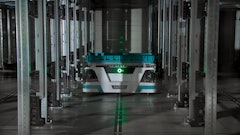
In the September issue of Supply & Demand Chain Executive, we explored changing your approach to training and the importance of microlearning. This month we tie it together with employee engagement strategies.
Giving employees the knowledge they need to perform is one half of the performance puzzle. The other? Engagement. Keeping employees engaged has been shown to make a marked difference in business outcomes.
Companies with engaged employees outperform their disengaged competitors by up to 202 percent. Then there’s the raw cost of productivity drain from disengaged employees. By some estimates, an engaged workforce could save $550 billion per year across the U.S. alone.
Now consider that about 70 percent of American workers report that they aren’t engaged, or are actively disengaged on the job.
Training is a huge part of employee engagement. Support for employees’ growth and development is one of the top reasons people stay with a company. And training done well results in employees who go beyond just the basic lessons they need to take—they start expanding their knowledge voluntarily and performing better.
That’s a sure sign of engagement.
It’s Time to Track
You have learning technology that helps employees learn and remember, and collects millions of different data points along the way. Now what happens?
Real-time data gives you insight into how learning directly impacts key business metrics. You can see exactly which training topics translate into behaviors and performance—and act on them.
Data can help identify skill gaps, which is increasingly important as the workforce evolves. Whether it’s among baby boomers, millennials and even Gen Z, or between experienced hires and those coming from non-manufacturing sectors, or even among part-time, full-time and consulting arrangements, training needs to be flexible. Knowing what those needs are and where gaps exist can help bring everyone to the same level of performance.
It can also help hone in on the most effective programs. When you can pinpoint exactly which programs are working and which aren’t, you can make informed decisions about what to scrap, what to change and what to keep. Then, you can track how those updated programs are performing in an iterative way.
With a workforce that’s more diverse than ever, data matters more than ever. Data helps you not only identify those gaps and differences, but also act on them.
How to Implement a Modern Learning Program
Ready to get started on a tech-based, data-driven training program that improves the bottom line? Here are four steps to set you on the right path:
1) Establish goals.
Identify the results you want to achieve. Replace outdated training goals like participation rates and test scores with the business targets your company has—from reducing scrap to increasing throughput and everything in between.
2) Identify behaviors.
Work backwards from those targets. Pinpoint what people have to know and do to achieve those results. Once you’ve identified key behaviors and foundational knowledge, you know what areas your training needs to support (and what mistakes it needs to fix).
3) Understand workflows.
Watch how your frontline works. How do they spend their time? What tools and resources do they use? By understanding their daily routine, you’ll be able to find the right moments to introduce learning into the mix.
4) Partner up.
Bringing in a new training program or overhauling an old one is a lot of work. Don’t be afraid to ask for help. A trusted partner can help you introduce microlearning into your organization and get programs up and running faster to save time, effort and resources.
In a fiercely competitive economy, success and failure ride on the decisions your employees make every day. When your frontline does the right things at the right time, you help them reach their full potential. You also help your business get ahead. If you aren’t already tracking your frontline learning and development efforts, now’s the time to start.



















